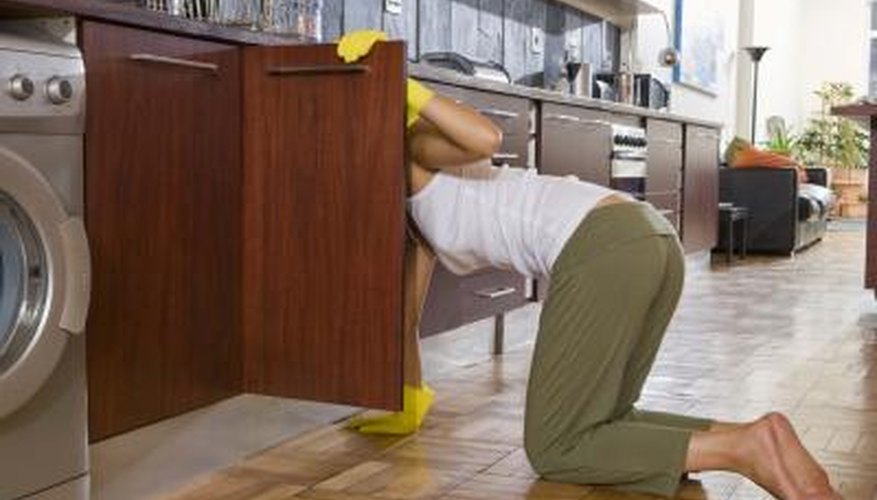Even if your cleaning business is as simple as one person, a bucket of cleaning products and a couple of clients, you will still need to know how much you are earning in order to properly budget and pay your taxes at the end of the year. If you set up a simple bookkeeping system and enter basic information into it regularly, you will be able to know how you're doing financially and stay out of trouble with the authorities.
Keep track of the amount you earn through your cleaning business. If you are the only person working for your business and you only clean for a couple of clients each week, set up a simple spreadsheet with a column for each client's name and a line for each day you work. Enter the amount you are paid each day you clean, and tally these amounts at the end of each month so you know how much you earn from each client and how much you take in overall.
If your cleaning business is more complicated, with multiple employees cleaning for multiple clients on any given day, organise your income on paper by creating columns for the work that each employee does on each day, or simply entering your total income day by day.
- Even if your cleaning business is as simple as one person, a bucket of cleaning products and a couple of clients, you will still need to know how much you are earning in order to properly budget and pay your taxes at the end of the year.
- If your cleaning business is more complicated, with multiple employees cleaning for multiple clients on any given day, organise your income on paper by creating columns for the work that each employee does on each day, or simply entering your total income day by day.
Track the expenses for your housecleaning business by creating a simple spreadsheet using a program such as Excel or by using a columnar pad of paper. Designate columns for each type of expense you incur, such as cleaning products, payroll, advertising and business licenses. Don't forget to include the cost of the columnar pad you use for your bookkeeping or the software you are using as long as you bought it specifically for the purpose of maintaining your cleaning business bookkeeping. Enter the amounts of your expenses in each category and tally these amounts month by month.
Keep a mileage log for your cleaning business. List your starting mileage for each business-related trip, as well as your ending mileage. Subtract the starting mileage from the ending mileage in order to calculate the total number of miles you drove. Include trips to buy supplies as well as miles driven between clients' houses. Do not include trips from your house to your first client's house each day, or trips home from your last client's house each day. The IRS regards these as commuting miles and does not allow you to write off commuting expenses.
- Keep a mileage log for your cleaning business.
- List your starting mileage for each business-related trip, as well as your ending mileage.
Compile your cleaning business bookkeeping at the end of each year by adding your total income for each month as well as your total monthly expenses in each category. Tally the total number of miles that you have driven for your cleaning business, excluding commuting miles, and multiply that number by the IRS standard mileage deduction for the year, which you can find on the IRS website. Subtract your total annual expenses from your total annual sales in order to calculate your net annual income.
